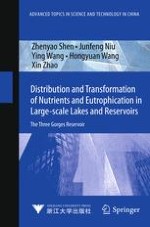"Distribution and Transformation of Nutrients and Eutrophication in Large-scale Lakes and Reservoirs: The Three Gorges Reservoir" presents key findings on early eutrophication in large-scale lakes and reservoirs, providing readers with an overview of lake management problems and the tools that can be applied to solve them. The broad spectrum of available tools is presented in detail, including environmental technological methods, ecotechnological methods and the application of models to determine the best management strategy.
The book is intended for environmental engineers and researchers in the fields of environmental science and ecological chemistry.
Professor Zhenyao Shen, Professor Junfeng Niu and Associate Professor Ying Wang work at the School of Environment, Beijing Normal University, China. Dr. Hongyuan Wang works at Chinese Academy of Agricultural Sciences, China. Dr. Xin Zhao works at Changjiang River Scientific Research Institute, China.
